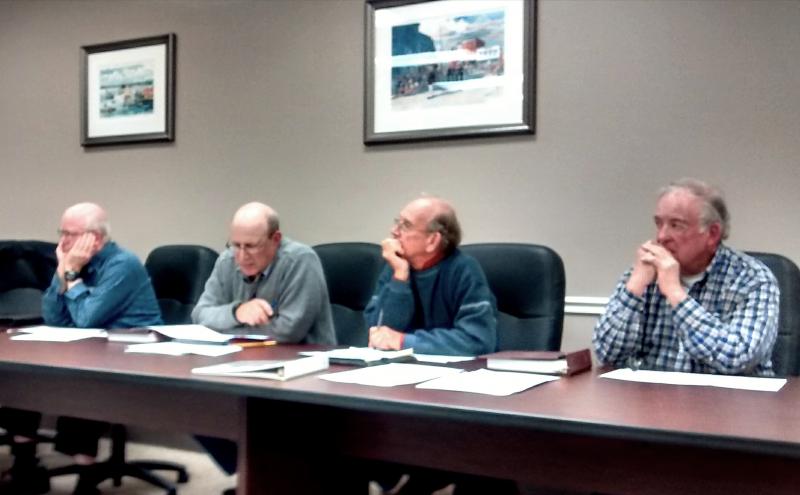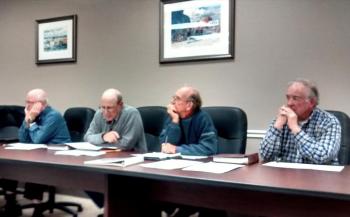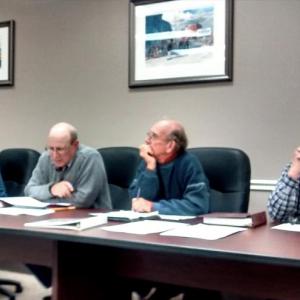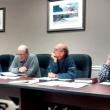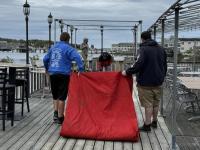Romar project moves on to next step
On Wednesday evening, Nov. 9, the Boothbay Harbor Planning Board and the Knickerbocker Group moved forward concerning the potential sale of the Romar bowling alley property.
The sticking point to the sale has been the interpretation of principal uses. Existing Boothbay Harbor land use code had determined the Romar building and property had four principal uses, a marina, a commercial parking lot, an art gallery, and a bowling alley. Code Enforcement Officer Geoff Smith, the Department of Environmental Protection (DEP), the Maine Municipal Association (MMA), and town attorney Mary Costigan agreed on this number. The Knickerbocker group, representing its client and potential buyer, Rahul Anand (8 Wharf St. LLC), was making its case for six existing principal uses, which Knickerbocker argued was essential to its client’s design and intent. The DEP, MMA, Costigan and Smith agreed that a cafe and office space within the Romar building were considered accessories to the principal uses, but Knickerbocker claimed they operated as independent entities and were not subordinate to the bowling alley. At the Nov. 9 meeting, Knickerbocker acknowledged the town's argument regarding the four principal uses.
Standing before the board, Smith, and a large group of people interested in the project, Knickerbocker architectural designer Randy Smith presented a revised interpretation of Romar's principal and accessory uses.
“After going over the latest documentation, we realize that we are all basically on the same page,” he said. “Tonight, we want to agree on the number of principal uses, and to know that if we were to come back with a new application, it would be approved.”
Randy Smith explained that the four principal uses, as Knickerbocker and 8 Wharf St. LLC sees them, are the marina, a commercial space downstairs, and two residential units upstairs. A general store and cafe would serve as accessory uses to marina slip owners. The parking lot would be retained, but modified as an accessory use.
“This is similar to the Carousel Marina in Boothbay Harbor,” he explained. “They offer quite a few amenities on their property, all of which are accessories to the marina. We feel confident that this aligns with the prevailing interpretation made by the DEP, the MMA, and Mary Costigan.”
The discussion with the board revealed kinks to be worked out, such as how the private marina use and public use might possibly change the interpretation of principal versus accessory use.
“Therein lies what we've been struggling with,” said Randy Smith. “In our minds, the marina is the focal point, where people who rent the slips have a place to wash up and sit down and eat when they come in from their boats.”
Another discussion centered around the financial structure. How would 8 Wharf St. LLC run the property? How many leases would be allowed? Randy Smith explained that Anand would be the sole owner, and the board agreed that he could extend no more than four leases for the four primary spaces, to four tenants.
Board member William Hamblen complimented Smith on Knickerbocker's new interpretation of existing codes, saying, “I credit you on your creativity. It does seem to be a little work-around to where we want to be,” he said. “I still think the way to go is to change the ordinances in Boothbay Harbor.”
“Are you comfortable with us developing an application in line with what we've discussed from a use standpoint tonight?” Smith asked the board. “The due diligence on the sale of the property is due in a couple of days and what we do depends on your feedback.”
Board members gave Smith the go ahead. “You did good,” said member John Hochstein.
Event Date
Address
United States

